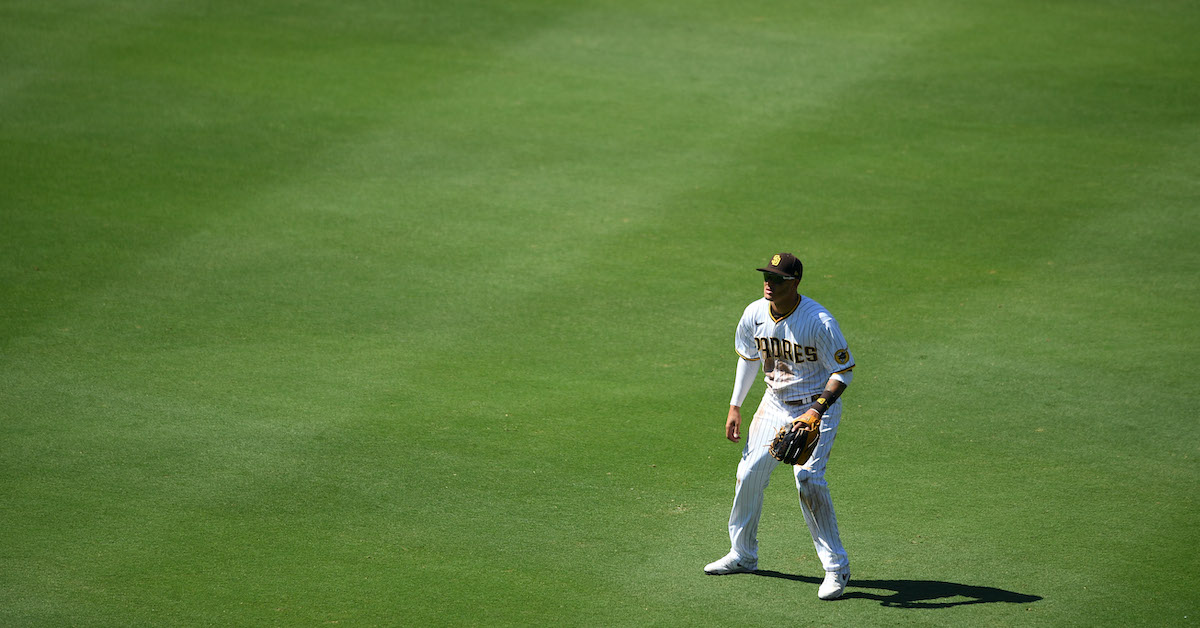Rangers and Twins Make a Swap Up the Middle

We’d been missing out on those sweet free agent signings during the owner’s lockout, but how about a trade? This one, while not a blockbuster, sends Twins backstop Mitch Garver to the Rangers in exchange for Isiah Kiner-Falefa and prospect Ronny Henriquez per multiple sources, giving both teams extra options at premium positions as they look to become competitive in the near future.
Let’s dive into the headlining players. Garver isn’t a household name, but he has the potential to be one of the league’s best catchers thanks to his identity at the plate: a fly-ball hitter with thunderous bat speed, which is a slam-dunk combination regardless of one’s surroundings. And while I did write about his passive approach in early counts, it’s a minor flaw that doesn’t stop him from putting up top-percentile offensive numbers. Here are the leaders in WAR per 600 plate appearances among catchers since 2019; look who’s near the top:
| Name | WAR | WAR/600 |
|---|---|---|
| Will Smith | 7.5 | 5.4 |
| J.T. Realmuto | 11.8 | 5.3 |
| Yasmani Grandal | 10.6 | 5.3 |
| Mitch Garver | 5.9 | 5.2 |
| Sean Murphy | 5.4 | 5.0 |
| Buster Posey | 6.8 | 4.5 |
| Tom Murphy | 4.2 | 4.2 |
| Salvador Perez | 5.3 | 3.9 |
| Mike Zunino | 4.9 | 3.9 |
| Austin Nola | 4.2 | 3.9 |
So what’s holding Garver back? Simply put, injuries. In the midst of a breakout 2019 campaign, he suffered an ankle injury after colliding with Shohei Ohtani at home plate. In ‘20, a right intercostal strain may have contributed to his miserable slump. And just last year, he underwent surgery after a fluke foul tip struck his groin, taking him off the field for nearly two months. The inevitable wear-and-tear at the position has not been kind to Garver, but if he stays healthy, he can go toe-to-toe with the likes of Realmuto and Grandal for most valuable catcher. His bat is just that good.
Meanwhile, Kiner-Falefa is coming off a season that acts as a testament to his durability and value. He proved the projections wrong by excelling at shortstop, a position he had little prior experience with; in addition, he showed that his bat is adequate enough to stick at a starting role. But while Kiner-Falefa seems like the archetypal low-ceiling, high-floor player, the error bars are wider than one might think. Baseball-Reference, which uses DRS in its calculations, pegged him at 3.7 WAR last season. Our site, which uses UZR, had a more pessimistic view: 2.3 WAR. Baseball Savant is outright skeptical of Kiner-Falefa, with his -7 OAA placing him among the worst defenders at short. It’s weird, and we’ll definitely need a much larger sample before deciding one way or the other. Read the rest of this entry »








